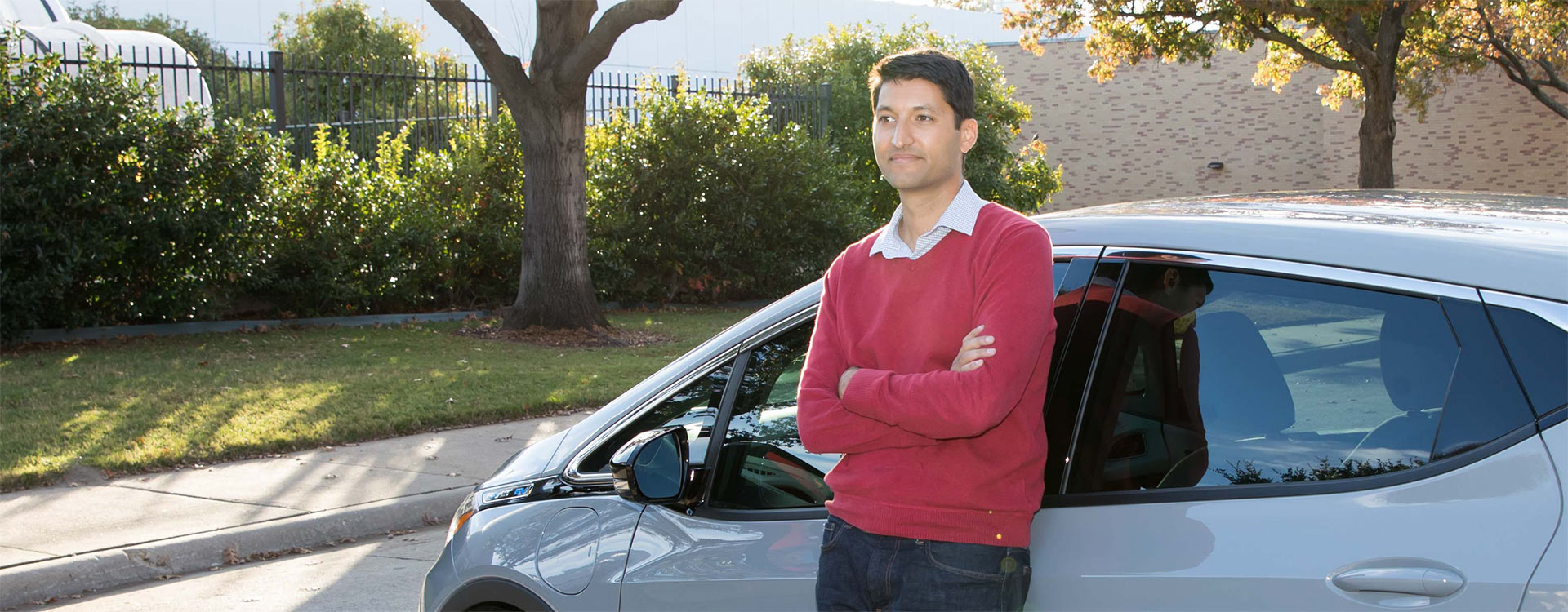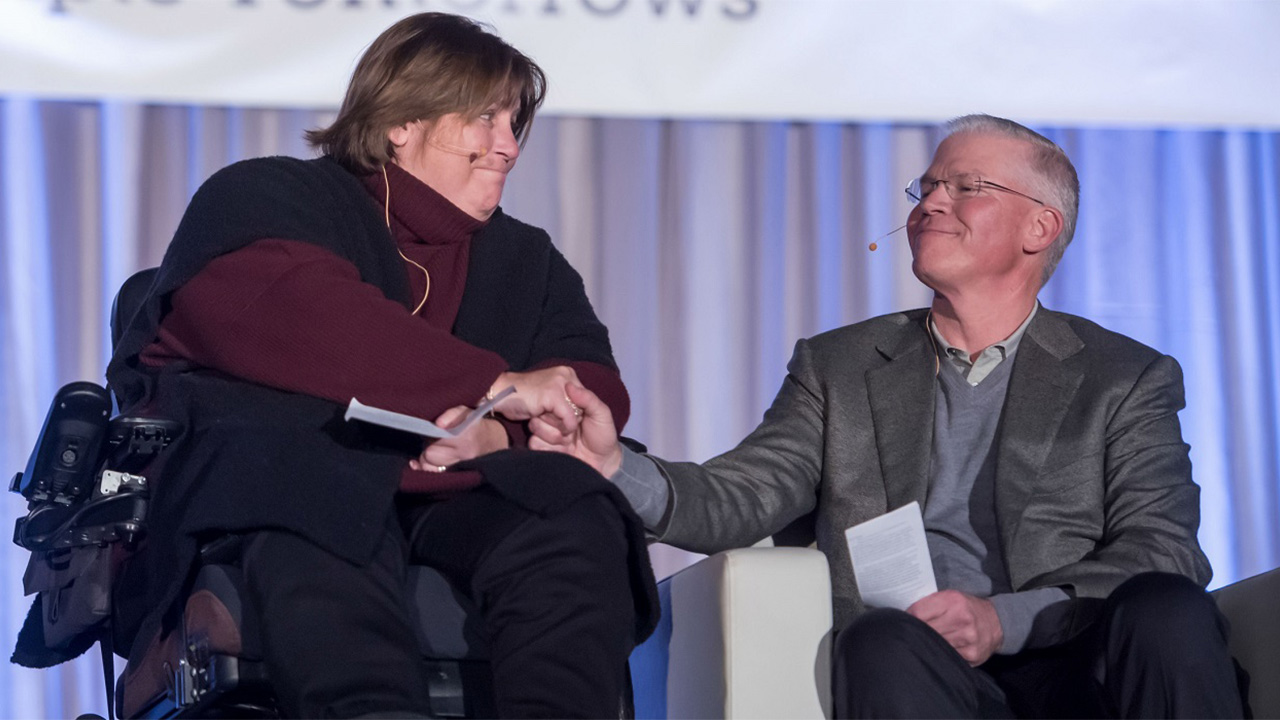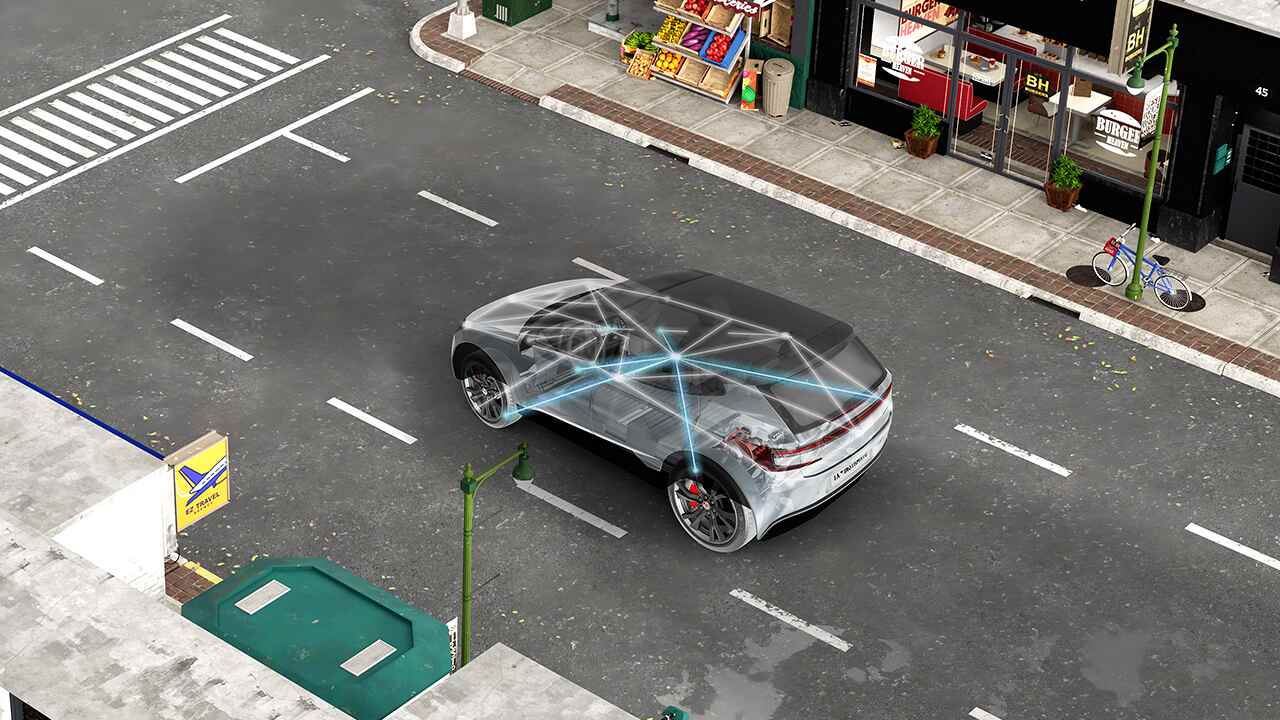From developing groundbreaking innovations to mentoring new TIers, Pradeep Shenoy is passionate about pushing the next generation of automotive power technology forward

Pradeep Shenoy fixates on his television and his mental wheels spin. He’s watching the latest episode of “Long Way Up,” a documentary series that chronicles actor Ewan McGregor and a friend riding electric Harley-Davidson® motorcycles from Ushuaia, Argentina – the southern-most city in the world – to Los Angeles.
Ewan and his crew struggle with the brutal winter weather in Southern Patagonia and battery-charging issues on their motorcycles. Pradeep, watching the series from his North Texas home, moves into problem-solving mode. This is his wheelhouse.
“I’m watching this episode and find myself researching the Harley-Davidson electric motorcycle,” Pradeep said. “What are the specs? What is the battery pack structure? Why are the batteries charging so slowly? My curiosity was piquing, and I wanted to understand.”
His first instinct was to solve the design challenges. His second was to bring it to his team.
Pradeep leads our company’s automotive power design team, a group of engineers who solve system-level challenges for automotive customers. The team is currently working on an innovative, game-changing design for electric vehicle (EV) charging using gallium nitride (GaN), and he thought that design, or a variation of it, could be a good fit for the motorcycle. He wanted to see if the team thought the bike could benefit from a GaN-enabled higher-power charger.
Power electronics and teamwork are two of his passions. He’s at his best when these passions intersect.
“I’m a power electronics nerd, but I’m a sociable nerd,” he said. “I love interacting with people, learning different perspectives and working together. A good team is effective at moving toward a common mission while also forming trust and relationships. I can’t overstate the importance of having quality relationships.”
Love at first power design
Pradeep’s passion for injecting more power into electronics – finding ways to go faster, push further and perform better – began with a university project: a hybrid formula race car.
He was an electrical engineering student and volunteering in the hybrid-electric vehicle lab at the Illinois Institute of Technology, soldering circuit boards and learning about motor drives and hybrid-electric vehicle components. During that time, he was named electrical leader on a new project: designing and building a car for the inaugural Formula Hybrid. The educational team competition emphasizes drivetrain innovation and fuel efficiency in a high-performance race car. The Illinois Tech team drove 17 hours to the New Hampshire Motor Speedway and finished fifth in the competition.
It was love at first design.
“The design was rudimentary, but I felt proud and was a little amazed to see our car moving on the track,” Pradeep said. “There was a big sense of accomplishment, and it fueled my hunger to learn more. That year was a turning point for me. Working in the lab and on that project is when I fell in love with power electronics.”
Since then, Pradeep has been working on power electronics design for nearly 15 years, helping customers around the world solve their power design challenges. When he is not designing a power supply, he is often teaching or writing about it. You’ll likely find him presenting at our Power Supply Design Seminars, which is a technical training opportunity for engineers who want to learn more about power management, or at industry events such as the Applied Power Electronics Conference.
Innovating for a better world
It’s no coincidence that the lab incubated Pradeep’s love for power electronics. Some of his favorite moments are spent in the lab creating new technology. Pradeep has spent his career innovating in high-density and high-efficiency power conversion systems.
“Power electronics influence so many exciting technologies today – computer servers, solar energy, wearables, electric vehicles, even your vacuum cleaner,” Pradeep said. “None of those applications would be possible without power. Power is everywhere, and seeing the impact of power design is rewarding and energizing.”

Pradeep charges his electric vehicle.
One design came shortly after he began working at Kilby Labs, our applied research center named for Jack Kilby, who invented the integrated circuit at TI in 1958. Pradeep was the technical leader on a breakthrough innovation in power conversion, a series capacitor step-down converter the team made 65% smaller than its competitor, which opened up valuable board space for power engineers to creatively design in more features, functions and power without losing efficiency.
He took the prototype and test chips from that project and worked with a team that released the device to market to improve enterprise computing servers, microprocessors and telecommunications applications.
“A breakthrough innovation takes a team of people to accomplish,” Pradeep said. “It is important to have the right people on the right projects and find the right mix of talent across all phases. Once you have the right team in place, you’re able to work together to find the right solution.”
Leading with an eye on the future
Pradeep’s greatest accomplishments have come as a result of the rigorous step-by-step processes required to design, build, test, tweak and retest. Now he’s passing on those experiences by mentoring the next generation of engineers.

Pradeep charges his electric vehicle.
“As my mentor, Pradeep took me under his wing and taught me everything I know,” said Sahana Krishnan, a systems engineer on Pradeep’s team. “His projects became my projects. We would sit down and he would show me each step and each detail, even if it meant that it slowed him down. He’s a teacher, a nurturer and a leader who wants everyone on the team to succeed.”
But more than that, he always makes sure everyone on the team knows they are valued, she said.
“I want to help people realize all of their potential and capability so that we can see more growth in power – more electric vehicles, more solar installations and a transition to more sustainable energy,” he said. “My focus is on creating an environment where team members can be fully themselves so they succeed. Setting up the team for success sets up our customers for success – and in turn creates a better world."


